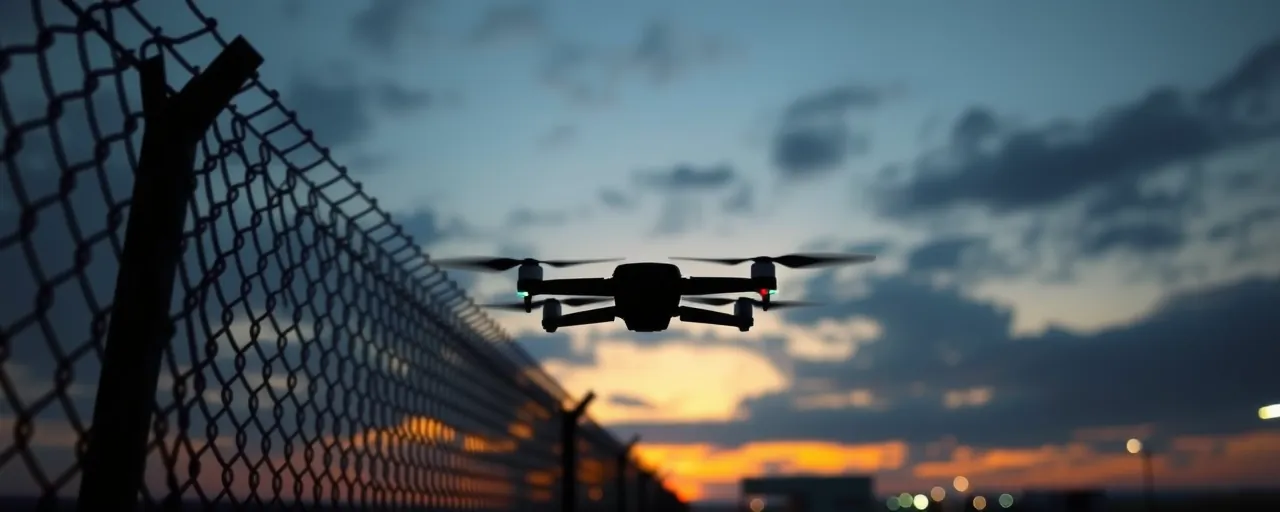A New Threat in the Skies
In December 2023, unidentified drones buzzed over Joint Base Langley-Eustis in Virginia, catching the Department of Defense off guard. The incident exposed gaps in the military’s ability to detect and neutralize unmanned aerial systems, raising alarms about the vulnerability of domestic bases. Since then, the Pentagon has scrambled to strengthen its defenses, driven by the growing accessibility of drones to both hobbyists and potential adversaries.
The episode wasn’t isolated. Drones have increasingly become tools for surveillance, disruption, and even attacks, with non-state actors like terrorist groups and criminal networks exploiting their affordability. The U.S. military, tasked with securing its installations, now faces a complex challenge: how to counter these agile, elusive threats without overstepping legal or ethical bounds.
Building a Stronger Shield
Mark Roosevelt Ditlevson, acting assistant secretary of defense, told lawmakers in April 2025 that the Pentagon has made strides since the Virginia incident. Improved coordination, better sensors, and clearer command structures have enhanced the military’s ability to respond to unauthorized drones. He pointed to streamlined processes for interagency cooperation, with updated guidance expected soon.
The Defense Department is also deploying mobile ‘fly-away’ kits, portable counter-drone systems that can be rushed to bases lacking robust defenses. Navy Rear Adm. Paul Spedero Jr. emphasized the need for layered sensors to create a comprehensive picture of drone activity, acknowledging that no single technology can address every threat. These efforts reflect a broader push to integrate kinetic weapons, like missiles, with non-kinetic tools, such as signal jamming and directed energy.
Funding backs this pivot. The Army alone has allocated over $400 million in 2025 for counter-drone systems, including the Coyote missile, while the Pentagon seeks $250 million more for land-based defenses. Yet, the rapid evolution of drone technology demands constant adaptation, with adversaries experimenting with swarm tactics and autonomous navigation.
Navigating Legal and Ethical Hurdles
Current laws limit the Pentagon’s ability to act against drones over U.S. soil. Section 130i of U.S. Code restricts counter-drone operations to specific facilities and missions, leaving many bases unprotected. Ditlevson urged Congress to expand these authorities to cover all military installations and allow data sharing with other agencies to refine tactics. Such changes, he argued, would enable faster, more effective responses.
However, expanding military powers raises concerns. Advocacy groups warn that broader surveillance and mitigation efforts could infringe on privacy and civil liberties, particularly if detection systems sweep up data on lawful drone operators or civilians. The debate centers on balancing security with safeguards, like transparency and judicial oversight, to prevent overreach.
Regulatory gaps complicate matters. Only a few federal agencies have authority to counter drones, leaving state and local governments with limited tools. Industry experts call for a unified framework that ensures interoperability among systems and protects legitimate drone uses, such as commercial deliveries or aerial photography.
A Global and Domestic Challenge
The drone threat isn’t unique to the U.S. Globally, non-state actors have used drones for everything from explosive attacks in the Middle East to disrupting airports in Europe. In 2020, a drone targeted a Pennsylvania electrical substation, underscoring the risk to critical infrastructure. The Pentagon’s focus on domestic bases reflects a broader national security concern, with $1.1 billion invested in 2025 to expand the U.S. drone industry while countering misuse.
Historical incidents shape today’s urgency. ISIS’s use of drones in Iraq and Syria showed how quickly non-state actors could weaponize cheap technology. Mexican cartels have similarly used drones for surveillance and attacks. These examples highlight why the Pentagon, under leaders like U.S. Northern Command’s Gen. Greg Guillot, is prioritizing standardized procedures and command structures.
Looking Ahead
The Pentagon’s push to fortify its bases against drones signals a shift in how the U.S. military views domestic security. With technology advancing and threats diversifying, the balance between vigilance and restraint remains delicate. Lawmakers face pressure to grant the Defense Department more flexibility while ensuring oversight to protect civil liberties.
For communities near military bases, the stakes are tangible. Robust defenses promise safety, but the specter of surveillance looms large. As the U.S. refines its counter-drone strategy, the challenge will be to secure the skies without sacrificing the freedoms they represent.
